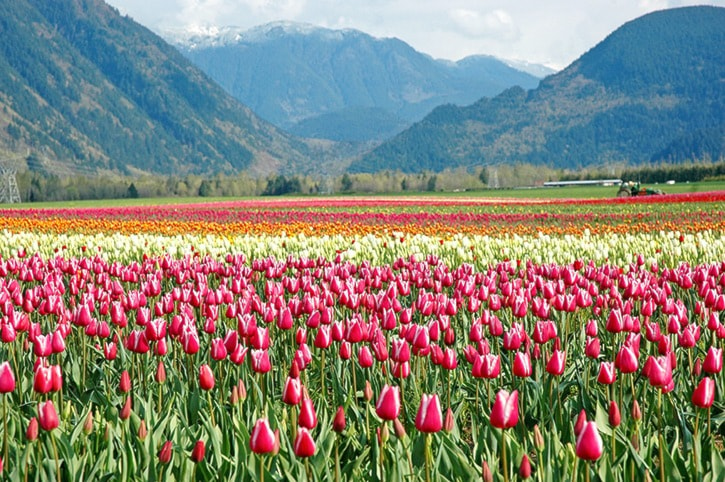Had things gone as planned this year, Kate Onos-Gilbert would have celebrated her eleventh year of bringing pleasure to visitors of Agassiz.
Like many occasions that are commemorated, she would have celebrated with flowers: approximately three million tulips, in her case, give or take a bloom.
But that won’t be happening in 2016, as Onos-Gilbert has officially cancelled her annual crowd-drawing tulip festival.
The decision came this year when her lease on Seabird Island land was up and they were given different options.
“The land they offered wasn't fertile enough and we need fertile land for our bulbs, so we decided that wasn't going to work,” Onos-Gilbert said. “We'd put ten years of fertilization into the other land and that was no longer available so we had to move.”
She adds that they have a good relationship with the Seabird band who helped with parking every year.
“They did provide a great event for the area and it's sad to see them go,” said Brian Titus, CEO of Seabird Island’s Sqewqel Development Corporation.
Finding a good place for visitors’ cars—a fundamental consideration for the Tulip Festival—was actually one of the issues that caused Seabird to revisit the arrangement.
Another was the sheer volume of traffic that would funnel from Vancouver and other areas in the Lower Mainland.
Last year’s decision to move parking to the Agassiz side of Seabird (construction of the gas bar forced the redesign) created even more trouble when coupled with the 30,000 visitors that flocked to the field over two weeks.
“It basically put the highway at a standstill for weekends,” Titus said. “We would have lineups from Seabird down to Popkum county. It would take four hours for people to get through.”
And that was annoying for a lot of people, Seabird and otherwise, he added.
Public safety became an issue when those who didn’t want to pay for parking would park along Highway 7 for kilometres, Titus said.
“People were walking on the highway with their phones in their hand, looking at their phones, kids running around, not paying attention,” he said.
It was a matter of time before something terrible was going to happen, so Titus tried to find a solution by offering land that was set back from the main road with a lot of parking space.
But the land didn’t meet Onos-Gilbert’s very specific needs.
In fact, in her hunt to find a suitable place for 2017 the flower grower is realizing how challenging a task it might be.
They use 35 to 40 acres a year for the tulips, but need a total of 120 acres to accommodate crop rotation practices.
And Onos-Gilbert needs to find a landowner who is ok with the operation being open all weekend during the festival period.
“You can't stop Vancouver from coming out on weekends,” she said. “Sunday happened to be the biggest day of the whole [festival] the last two years.”
With the massive growth her festival has seen in the last few years though, parking and traffic are the biggest consideration she faces when looking at land that would work in the future.
In an effort to stem the flow last year, they raised prices on both parking and entrance fees, but to no avail.
Onos-Gilbert’s tulip event has developed a strong loyalty with large East Asian communities in B.C. and abroad who come in droves.
“Now that I'm beyond that size of it being a hobby, I need help big time,” she said. “It's a big festival to be running by myself.”
So she also hopes whatever community the festival ends up in is willing to help, because her flowers generate a lot of business for the area during a quieter time in the tourist season.
Though she’s a bit relieved to have a calmer spring this year, Onos-Gilbert hopes the festival she started with 600 visitors in 2006 can continue next year.
“It's been great, it's been fun, people do love it,” she said. “You can't beat 40 acres of flowers blooming.”

